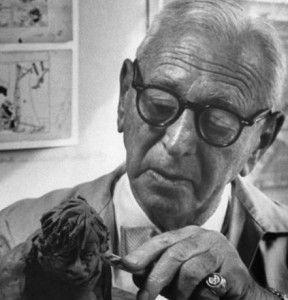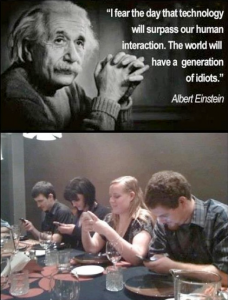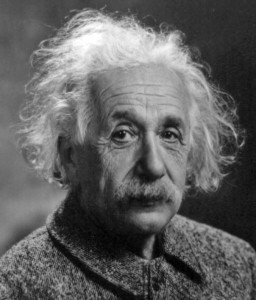Reuben Garrett Lucius Goldberg (1883-1970) was born in San Francisco and began drawing at age 4. He was obsessed with the art, but discouraged by his parents who sent him to study engineering. After earning $100 per month designing sewer systems, Goldberg realized it wasn’t what he wanted to do in life, so he quit to pursue his dream. He earned $8 per week drawing for the San Francisco Chronicle, most of which was thrown out and never used. Mainly, his job was sweeping floors and filing morgue photos. But Goldberg persisted, and was soon discovered when editors found that issues with his drawings sold more copies. Shortly after, Goldberg became a household name with his nationally syndicated comics like Mike & Ike, Lala Palooza and Sideshow. He was now earning $100,000 per year! During World War II, Goldberg drew infamous and controversial political cartoons. Though such cartoons would later earn him the Pulitzer Prize, he was forced to change his children’s last names. Inspired by the tech boom, Goldberg started designing various contraptions and inventions. He realized that people always do things the hard way, and to spoof this, drew cartoons of incredibly complex machines performing the simplest tasks, “a symbol of man’s capacity for exerting maximum effort to achieve minimal results.” These beloved, world-famous contraptions would be known as ‘Rube Goldberg Machines’. Goldberg was also a sculptor, author and screenwriter, and the first cartoonist whose work was featured at the Smithsonian Institute. The international Reuben Award for best cartoonists is named after him.
Words of the Week
The price of apathy towards public affairs is to be ruled by evil men.
– Plato





